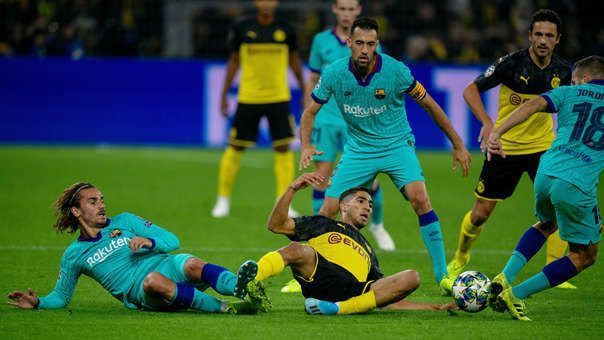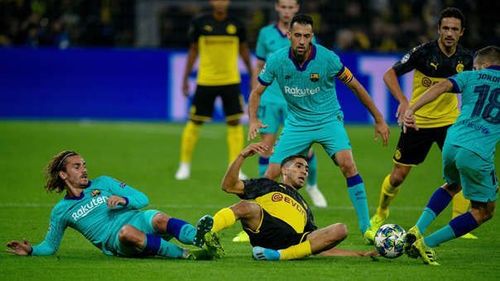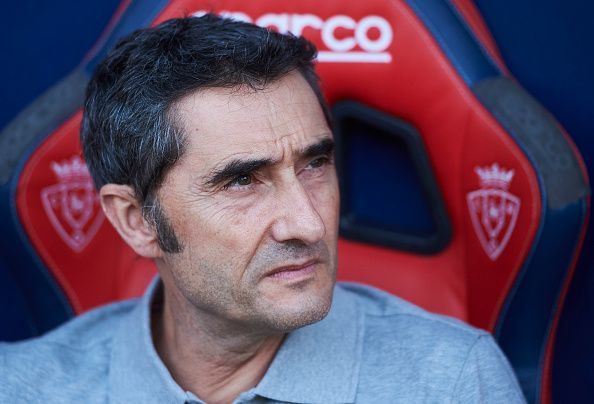
Borussia Dortmund 0-0 Barcelona: 5 Talking Points and Tactical Analysis | Champions League 2019/20

Barcelona and Borussia Dortmund immersed themselves in a cagey battle at the Signal Iduna Park in the UEFA Champions League. The game ended 0-0 and was a fair reflection of everything that transpired through the course of the ninety minutes.
The hosts started the better of the two but quickly receded into a holding pattern. The above enabled Barcelona to dominate possession and the first half followed the same trend.
The clearest chance of the period fell to Jadon Sancho, who blazed his shot over the bar from just outside the box.
Dortmund though, got into the ascendancy after the break and looked to dent their illustrious rivals. They even fashioned themselves a penalty but Marc-Andre ter Stegen superbly denied Marco Reus.
The draw between the pair, coupled with Inter Milan’s 1-1 result with Slavia Prague means that all teams possess one point after the culmination of their opening games.
Here is a look at the talking points from the match:
#5 Barcelona and Dortmund serve up a fascinating tactical battle in the first half

Coming into the competition, Barcelona and Dortmund represented two sides whose strengths revolved around its offensive players and whose rear-guard had been prone to the odd lapses in concentration.
Thus, many expected the teams to throw caution to the wind at the outset, thereby rattling the other’s cage early.
However, in the opening 45 minutes, none of the above materialised as both were content to spar, rather than land any decisive punches.
Dortmund started with a 4-4-1-1 system whereas Ernesto Valverde’s men fielded a 4-3-3 formation.
Consequently, the German side allowed Barcelona to dominate possession, meaning that the Blaugrana were accorded the time to methodically build play from the back and through midfield.
The Spanish outfit, utilising the extra body in the middle third, pinged passes across the field. Yet, they couldn’t break through the hosts’ defensive shield.
In response, Dortmund, who were a man short in centre of the park, courtesy the system they deployed, used the width of the pitch as much as they could.
Sancho and Thorgan Hazard played quite wide on either flank and the full backs were also encouraged to venture forward, whenever the opportunity presented itself.
Thus, the home side looked to create situations of numerical superiority on the wings, wherein the advancing full back also forced Barcelona’s wide forward to track back.
Subsequently, the Blaugrana didn’t have enough numbers on the flanks to mount a swift counter attack, in the process, reducing them to forays down the middle.
Moreover, the hosts tried to invite Barcelona forward and in turn, hoped for spaces to open up at the other end. However, the visitors didn’t fall into that trap and were happy to dominate possession instead.
Before the match began, several fans opined about a potential end to end game being in store.
And, though the encounter didn’t live up to that particular notion, one couldn’t deny the extremely high tactical quotient of the first period.